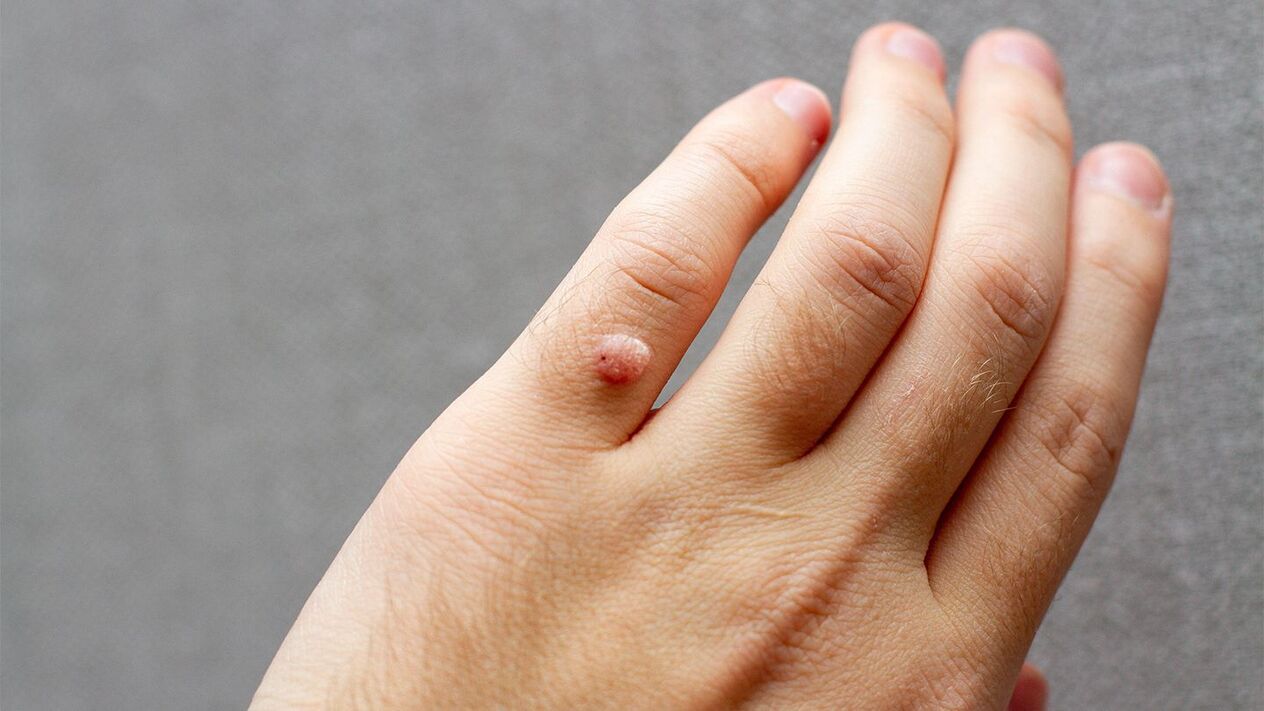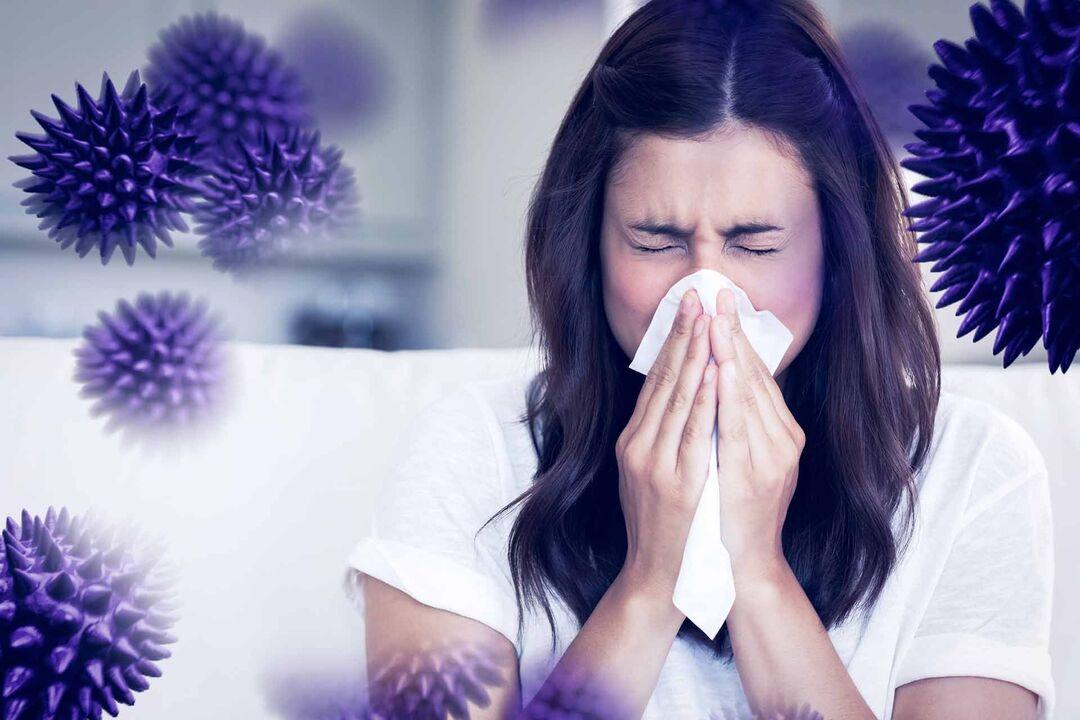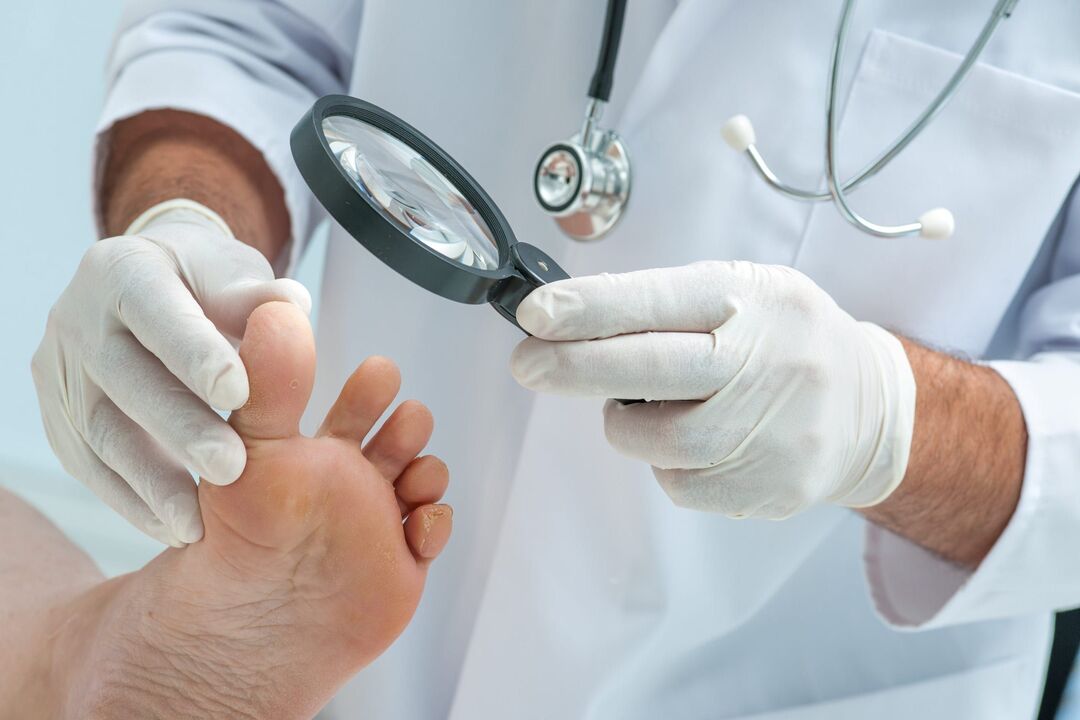First, you need to understand what a wart is. It is essentially a skin disease characterized by the appearance of small formations. The size of such formations varies from 1 mm to 1 or more centimeters.
The cause of warts is viral. They can be passed from person to person by simply shaking hands or using items that have been used by a sick person. The incubation period can last several months. So when warts form on your body, it can be very difficult to remember who "gave" them to you.
It must be said that there are different types of warts, so the approach to them should be extremely delicate. They can be located on the back of the hand, on the face, and even on the scalp. Warts on the legs are usually found on the soles of the feet. If they are painless on the arms, they can cause a lot of discomfort on the legs. Their formation can be facilitated by the sweating of the feet and the pressure of the shoes.
Juvenile warts, which occur during adolescence, occupy a special place. These warts are usually small in size and are located on the hands and face. For any type of wart, see a doctor to rule out other skin conditions.
Thus, genital warts are sometimes mistaken for warts, so a venereologist and urologist should be consulted. Each new growth on the skin requires maximum attention. It happens that a tumor on the skin is mistaken for a wart, and this is extremely dangerous, especially if it is about to be removed. In this case, you should not resort to folk remedies!
Such procedures can only be performed by a qualified doctor, first making sure that you are dealing with a wart. Not all warts are recommended to be removed, this method is used as a last resort: if the wart causes discomfort or bleeds, if the wart causes aesthetic discomfort, if the wart has reached a large size, if it is growing.
Otherwise, it is better to treat warts. The treatment must be carried out by a doctor and you must be monitored throughout the treatment. It must be said that improper treatment can contribute to the degeneration of a wart into a malignant tumor. Therefore, only consult a specialist.
Types of warts

Warts are more often diagnosed in children and adolescents, but they can also occur in adults. In medicine, the following types of warts are distinguished:
- Simple/vulgar.The most common type of skin tumor, it is diagnosed in 70% of cases in school-aged children. These types of warts most often appear on the hands, but they can also occur on the edges of the lips and on the neck. Simple warts are distinguished by the presence of the largest, "mother" wart - if it is removed, the smaller tumors disappear.
- Flat/young.Rare - up to 4% of diagnosed cases. They are located on the back of the hand, the edges of the lips, the head of the penis and the mucous membrane of the mouth.
- Palm planter.They appear in places where the pressure of uncomfortable shoes is most active. Diagnosing these types of warts is often difficult because the specialist must distinguish the tumor in question from corns and calluses.
- Yarn-like.Small "tails" with a special appearance - made of thin leather, can be many and are always arranged in a "cluster". It is most commonly found in the armpits, neck, and under the breast/breast.
The methods of removing warts on the body and hands depend directly on the type of tumor diagnosed in the patient.
It is worth knowing one more characteristic of warts - they do not have a precise description of their "appearance". For example, a plantar wart can be a small, rounded nodule with a dark center, but a simple wart is a growth on the skin with a heterogeneous structure. ", the easiest way to answer the question is if a thread-like type - an "icicle" appears on the skin, it does not cause pain or irritation. It is noteworthy that frequent rubbing of the wart leads to inflammation and irritation - it becomes red and can cause pain.
Where do warts come from?
This is all due to the human papillomavirus (HPV), which is most often spread through direct contact with an infected person's warts or personal belongings. Four of the dozens of HPV types are responsible for warts appearing on the skin.
HPV can easily be called "cunning". A person does not suspect that he has become the owner of HPV for a long time.
After infection, the virus is localized in the upper layer of the epidermis and does not appear for a long time. But as soon as the protective mechanisms weaken, the virus becomes active and manifests itself in the form of one or more warts.
From the moment of infection to the appearance of skin formations, it can take from a week to several months.
Locations
Which doctor to see for warts depends directly on the location of the growths.
Depending on the type, warts can grow all over the body, especially:
- on leg and arm, leg;
- in the armpit area, under the breast and on its surface;
- on the face, neck and head;
- on male and female genitalia;
- on the mucous membrane of the vagina, esophagus, larynx;
- in the mouth. on the tongue and inner surface of the cheeks and lips;
- on the body under clothes.
Reasons for appearance

It is very easy to get infected with human papillomavirus (HPV).
It is enough to be in close contact with a person who has growths on his skin.
However, the disease does not appear immediately, and warts may not begin to grow until several months or years after infection.
Factors affecting the activity of HPV:
- weakened immunity;
- exacerbation of chronic diseases;
- tension;
- malnutrition;
- bad habits;
- passive lifestyle.
What to do if the wart has already appeared
Let's go back to the results of the survey. Only 28% of respondents with warts consulted a doctor. It seems that the prospect of surgical removal procedures is more frightening than the wart itself. 34% of the study participants tried to remove the warts on their own, and 16% decided not to do anything because they did not attach any importance to it.
Why you need to get rid of warts
For those who are still unsure about removing warts, it is important to know the following.
- First, warts are contagious. For this, direct contact with the carrier's wart or personal hygiene items is sufficient.
- Second, warts tend to "conquer territory", i. e. spread to healthy areas of the skin. This process is called autoinoculation (self-infection).
It is clear that it is easier to treat warts in the early stages of the disease, which saves time, effort and money in the future. In addition, you can buy products for self-removal of warts in pharmacies.
When to see a doctor
- if the wart rapidly changes its shape, color, or both;
- if the color of the wart is uneven;
- if the boundaries of the wart are blurred (in this case, it is probably not a wart);
- if the wart hurts or is constantly injured (this increases the risk of it getting worse);
- if the number of warts gradually increases;
- if the wart bleeds or itches;
- if a wart has appeared in the genital area.
Which doctor treats warts in children and adults
If growths appear on any part of the body, consult a doctor who specializes in the treatment of skin diseases - a dermatologist.
- He performs the examination and decides whether further diagnostics are necessary (blood sampling, PCR test, biopsy).
- In certain doubtful cases, when a wart shows signs of malignancy, the dermatologist may recommend a consultation with an oncologist or dermato-oncologist.
- In most cases, the doctor will decide to remove the wart and then send the tissue for histology to make sure there are no signs of malignancy.
- Warts on the mammary gland of women can cause breast cancer and require a mammological examination.
Wart removal

The removal of warts is a radical method and is carried out in several ways. Warts can be removed with a laser. Along with this, cryotherapy and electrocoagulation methods are used. You can effectively remove warts with homeopathic medicines. Each method has its strengths and weaknesses.
When choosing a method of wart removal, the doctor is usually determined by the location of the wart on the body. Thus, laser removal can leave scars. Scar formation is sometimes observed after using the Surgitron device, so the method of wart removal must be chosen by the doctor: depending on where the warts are located.
Cryotherapy and electrocoagulation are gentle methods for removing warts. Electrocoagulation is performed with a special device that uses high-frequency current. As a result of the use of this tool, the temperature of the tissue rises, the wart is destroyed, which causes the death of the virus.
Cryotherapy is also cauterization, but only with liquid nitrogen. The procedure is quite painless and leaves no trace. Speaking of these two methods, it is worth noting that their use eliminates contact with blood, which is extremely important. The removal of warts can only be entrusted to a doctor experienced in this field.
After removing the warts, you need to think about how to avoid getting the infection again.Under no circumstances should warts be torn off or tied at the base with a thread so that they fall off on their own! Such unreasonable behavior can lead to serious health problems - for example, the resulting wound can become infected, and the blood flow can be disturbed due to the tension of the base of the tumor.
A dermatologist or cosmetologist will tell you how to get rid of warts on the hands of children and adults, what procedures will help you forget about tumors on the body and face - you can contact any of these specialists. There are three main ways to get rid of warts:
- Laser therapy.Typically, this method is used to remove warts in the most sensitive and painful places, or if the patient wants to avoid scarring. Laser removal of warts on the face is the optimal solution, as this procedure is painless, does not require a long recovery period, and does not leave scars on the skin afterwards.
- Cryodestruction. This involves the use of liquid nitrogen, which literally burns away the tumor without leaving any marks on the skin, although in some cases there may be a small scar. After removing warts with liquid nitrogen, the patient must avoid direct sunlight, in the future a small whitish spot may remain at the site of the intervention.
- Drug therapy.It is used together with the above methods. There are many medications that are topical and help to kill the wart faster. The most effective remedy for warts is celandine extract, which is applied precisely to the growth. Do not use the celandine plant on its own to treat warts - if the juice gets on healthy skin, it will cause severe burns.
Getting rid of this type of skin tumor should be comprehensive. It is not enough to visit a doctor and find out what causes warts on your fingers or on your face, you must follow all the instructions and recommendations of the specialist. Even with adequate treatment, the relapse of the disease is recorded quite often - in 40-50% of cases, the warts reappear.
More information about warts, which doctor to consult for the treatment of plantar warts, and what the term "general therapy for human papillomavirus" means, can be found on the pages of our website.
Is it possible to remove warts with your own hands?
Warts can be removed at home, but only after diagnosis by a specialist.
There are special burning pharmaceutical products that can remove the growth after the first use. They have a cauterizing and necrotizing effect.
Such drugs are toxic and can cause burns to the tissues around the wart, so they should be used with caution. It is not advisable to remove warts at home in places with particularly delicate and sensitive skin (face, neck, mammary glands and genitals). You also need to make sure that the wart is completely gone and no root or other parts remain. The ability of warts to reproduce is so great that even a small piece of tissue can become a source of infection in healthy areas of the dermis.
When using pharmaceutical products, you must strictly follow the instructions for use and pay close attention to contraindications. Most of them are prohibited for children, pregnant and lactating women.
Warts are external manifestations of an unsatisfactory internal state of the body. It is not only important to get rid of the symptoms of the disease, but also the continuous fight against the virus. The human immune system can independently cope with the causative agent of the disease, if all possible help is given. For this, it is sufficient to lead a healthy and active lifestyle, to strengthen the body with sports and healthy foods.
Complications
Anogenital warts can develop and grow under certain conditions (such as sexually transmitted infections, reduced general and/or local immunity), thereby impairing a person's sex life and significantly reducing their quality of life.
In addition, inflammation and suppuration and ulceration of anogenital warts may develop due to prolonged mechanical impact on them. In rare cases, their malignant degeneration is possible.
Recommendations for wart patients
- Since two-thirds of cases resolve spontaneously within two years, warts can be observed without treatment. As the old lesions disappear, new warts may appear. This is not the result of treatment failure, but is part of the natural history of HPV infection.
- The treatment often takes several weeks or months, so patience and perseverance are necessary for the success of the therapy.
- Tools used to remove warts, such as nail files and pumice stones, should not be used on healthy skin or other people. For the same reason, if the warts are located in areas of the skin where there is hair, you should use an epilator or electric shaver on those areas, or not remove the hair at all, thus limiting the spread of the warts.
- In order to monitor and evaluate the results of the treatment, it is necessary to consult a doctor again. • If the patient performs the treatment independently, he can prescribe follow-up visits with the doctor at his own discretion.
Prevention
Preventive measures include:
- vaccination with quadrivalent vaccine (against HPV types 6 and 11, 16, 18);
- exclusion of casual sexual relations;
- use of contraceptive methods (condoms);
- compliance with personal hygiene rules;
- timely and appropriate treatment of infectious and inflammatory diseases of the pelvic organs;
F. A. Q
Which doctor treats warts?
For warts, it is best to see a dermatologist. A dermatologist specializes in the treatment of skin diseases and is skilled in removing warts.
Is it possible to consult a general practitioner with a wart problem?
Yes, you can see a family doctor, such as a family doctor. You can have an initial consultation and, if necessary, refer to a specialist - a dermatologist.
What methods do doctors use to treat warts?
Doctors can use several methods to treat warts, including cryotherapy (freezing the wart with liquid nitrogen), chemical removal, electrocautery (using an electric current to remove the wart), and laser removal. The doctor selects the most suitable method depending on the characteristics of the wart and the individual characteristics of the patient.
Useful tips
Tip #1
See a dermatologist. A dermatologist specializes in skin conditions and can help treat warts. He performs an examination, makes a diagnosis and offers the most effective treatment.
Tip #2
See an oncodermatologist. Warts can be linked to the human papillomavirus (HPV), which can cause skin cancer. A dermatologic oncologist specializes in the diagnosis and treatment of skin cancer, so if necessary, he can perform additional tests and recommend appropriate treatment.























